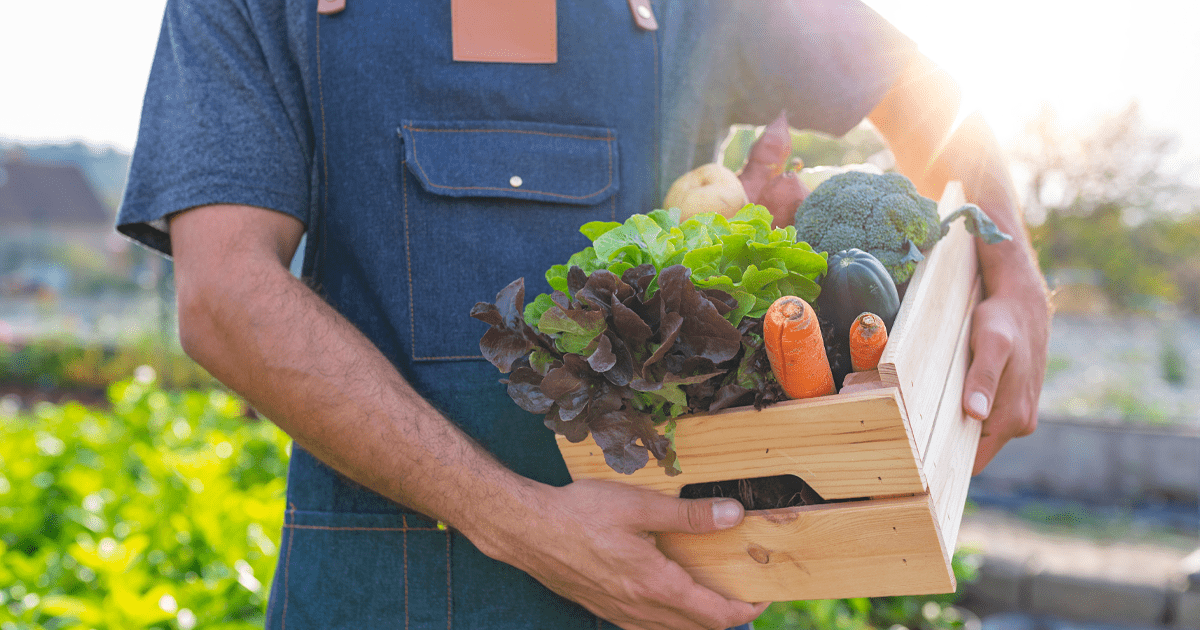In healthcare, the focus has always been on patient well-being, healing, and treatment. But what about the other, more nuanced factors that are quietly shaping the future of healthcare – like sustainability?
Sustainability in long-term care food service goes beyond figuring out how to “go green.” Long-term care staff leaders already consider the unique needs of their senior residents when it comes to their nutrition, health, and safety. Still, sustainability plays a unique role in increasing the community’s longevity – making it possible for more older adults to enjoy the comfort of assisted living. With the world’s population of older adults expected to double to 2.1 billion by 2050, it’s time to start preparing now.
Let’s start by defining what food waste and sustainable practices look like.
What is Food Waste?
The U.S. Environmental Protection Agency (EPA) defines food waste as “food that was not ultimately consumed by humans that is discarded or recycled, such as plate waste (i.e., food that has been served, yet not eaten), spoiled food, or peels and rinds considered inedible.”
What are Sustainable Practices?
The sustainable management of food, or sustainable practices for short, is the EPA’s framework for reducing food waste. Ultimately, the goal is to create a better environment for future generations by changing harmful agricultural, manufacturing, consumption, and disposal food practices. For example, starting a recycling program and donating uneaten food to people in need are two ways to practice sustainability.
Benefits of incorporating sustainable practices include:
- Reducing carbon footprint and cutting costs by eliminating the middleman in the food supply chain
- Boosting local economies by sourcing food from local farmers or small businesses
- Promoting better health by encouraging residents to eat fresh and more nutritious foods
- Contributes to the overall well-being of the environment by reducing methane from landfills and greenhouse gas emissions
Problems with Food Waste in Senior Living – What does it look like?
Food waste in senior living presents multiple challenges. It places a financial strain on communities and often leads to higher operational costs. It’s also an ethical concern; wasting valuable resources increases the risk of food insecurity.
As the populations filling senior living communities change, so does how staff design programs to best suit their needs. This new generation of seniors, mostly comprised of baby boomers, have different views about a community’s social consciousness and holistic commitment to health. But what does this actually look like?
Studies in Massachusetts show that assisted living communities across the state waste a little over 280 pounds of food every day. If this is the average, there are undoubtedly communal living spaces that produce more food waste, too. Environmental protection advocacy groups in Connecticut cite similar statistics, reporting that between 4-10% of purchased food ends up in the garbage instead of a kitchen. How is change possible if produced food doesn’t even make it to the people’s plates? It all starts with establishing what sustainability looks like in your community.
Defining sustainability in your community involves more than looking at food waste statistics. Sometimes, it requires you to closely inspect resident health demographics and everything in your kitchen, even the cutlery and dining ware. For example, older adults with cognitive impairment may have trouble focusing throughout a meal. This, coupled with a general lack of appetite due to aging, can cause them to be more susceptible to not eating everything on their plate. Some studies have explored this, even showing that plate color influences food waste in senior care. A 2020 Norwegian study found that less food was thrown away when served on a colored plate (9%) than on white plates (26%).
Culinary Service Group’s Sustainability Practices for Senior Living Communities
Food waste happens at every part of the food supply chain, so interventions are necessary at each level – including senior living communities. Whether sustainability starts with large corporations or your community’s kitchen, initiating change with a forward-thinking mindset is essential. However, tackling sustainability can be challenging if you’re making considerable alterations to your food service management program alone. Culinary Services Group is your partner in making your community more environmentally conscious. We understand the unique challenges of nutrition in senior living and have developed resources and innovative solutions to help you align your current efforts with new, sustainable improvements that benefit staff and residents.
Here are some of the ways that Culinary Services Group can help you implement more sustainable practices in your senior living community through our Culinary Promise:
- Our Culinary Promise. Design a meal service style that suits your community best. This reduces food waste by retaining services that benefit residents your residents the most while eliminating those that are less important to them. Our Culinary Promise offers different levels of sustainability to meet every budget. So, you can choose the sustainability measures most important to you.
- Making customizable menus. Every resident has a unique preference, and your menu should reflect that. We try to customize the menu to meet the needs of the community and to ensure residents like and consume most of what’s on their plates, lowering the amount of food they throw away at the end of the meal.
- Following health and safety standards. We have strict standards of excellence, meaning we operate clean kitchens that are compliant with F-tag guidelines and other regulatory requirements. For example, ensuring that food is stored and prepared correctly reduces the risk of spoilage that would lead to increased food waste.
- Sourcing fresh food from local vendors. We make a point of intentionally finding environmentally sound ingredients from local vendors. Whether that’s from your local farmer’s market or directly from a local farm, we prioritize freshness in our kitchens.
Are you ready to make sustainability changes in your community? All it takes is one click to schedule a consultation with one of our sales team members, who can help you determine which services are best for your residents.








